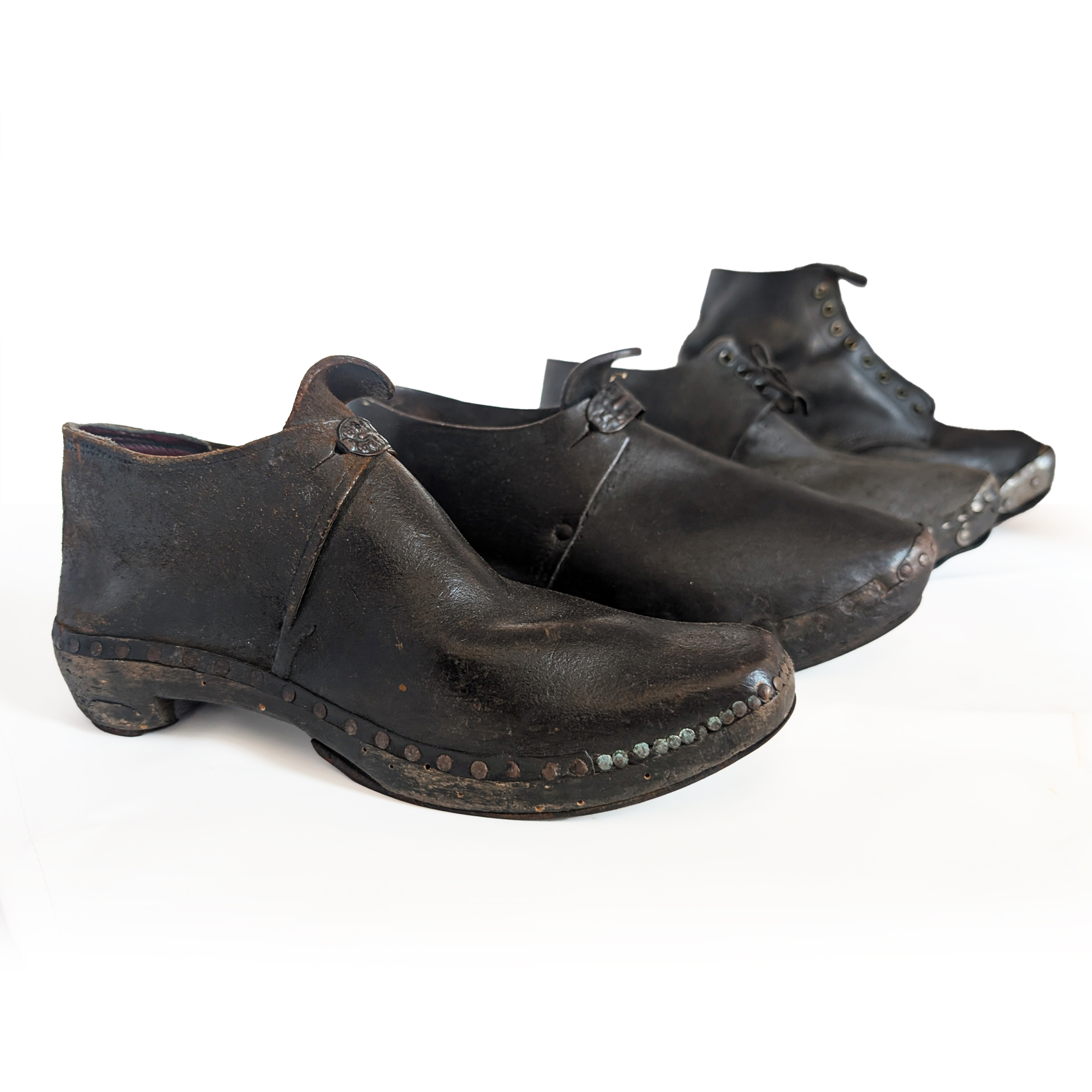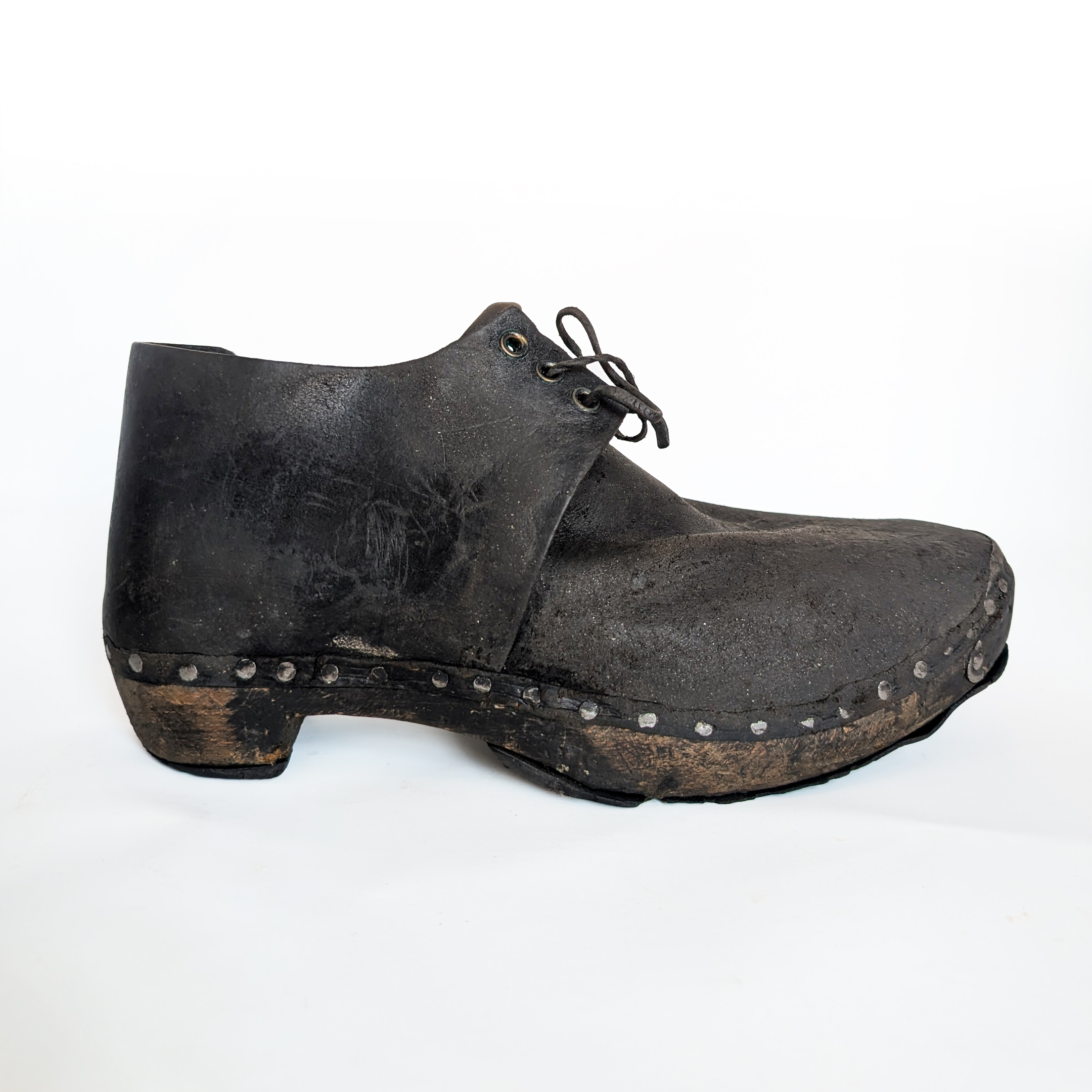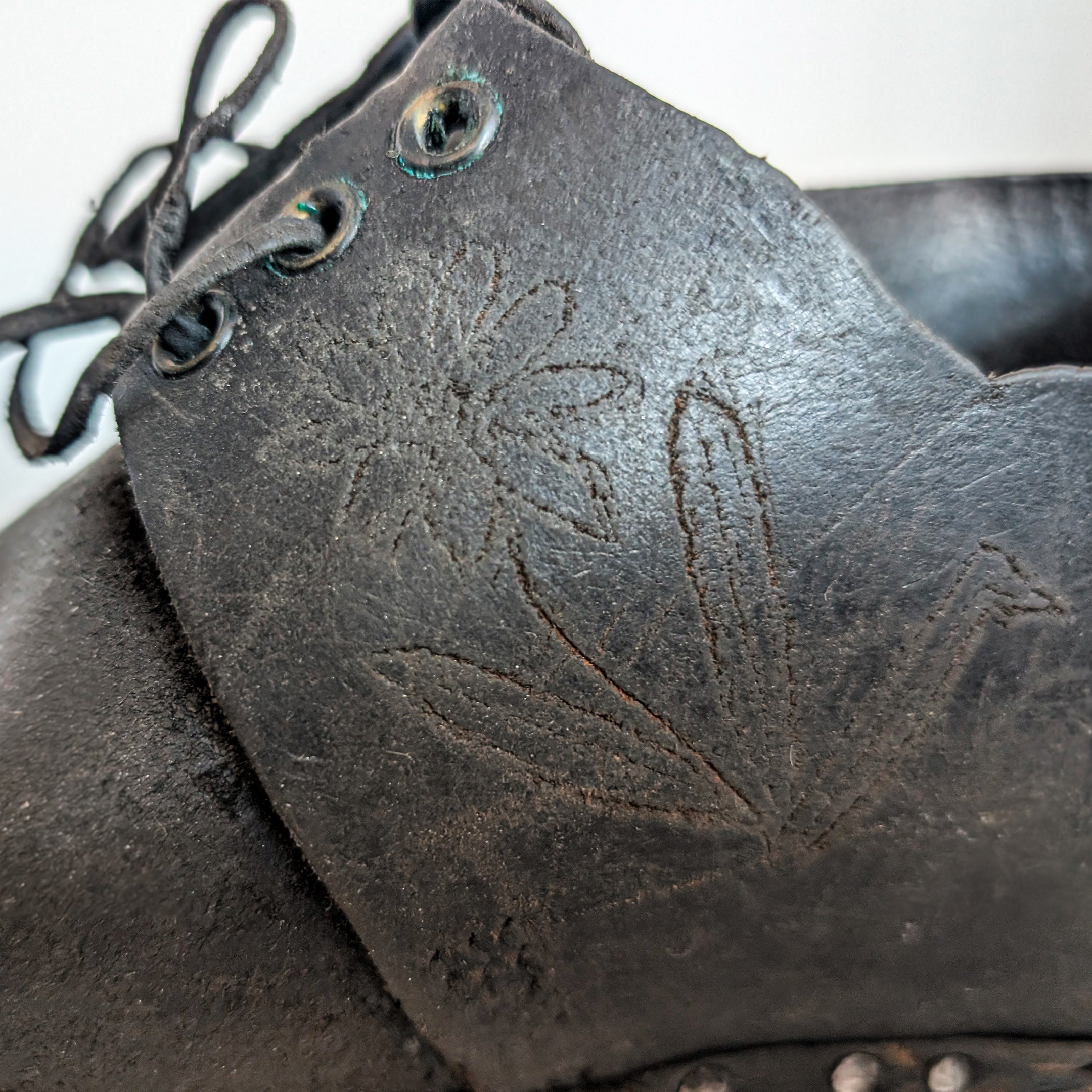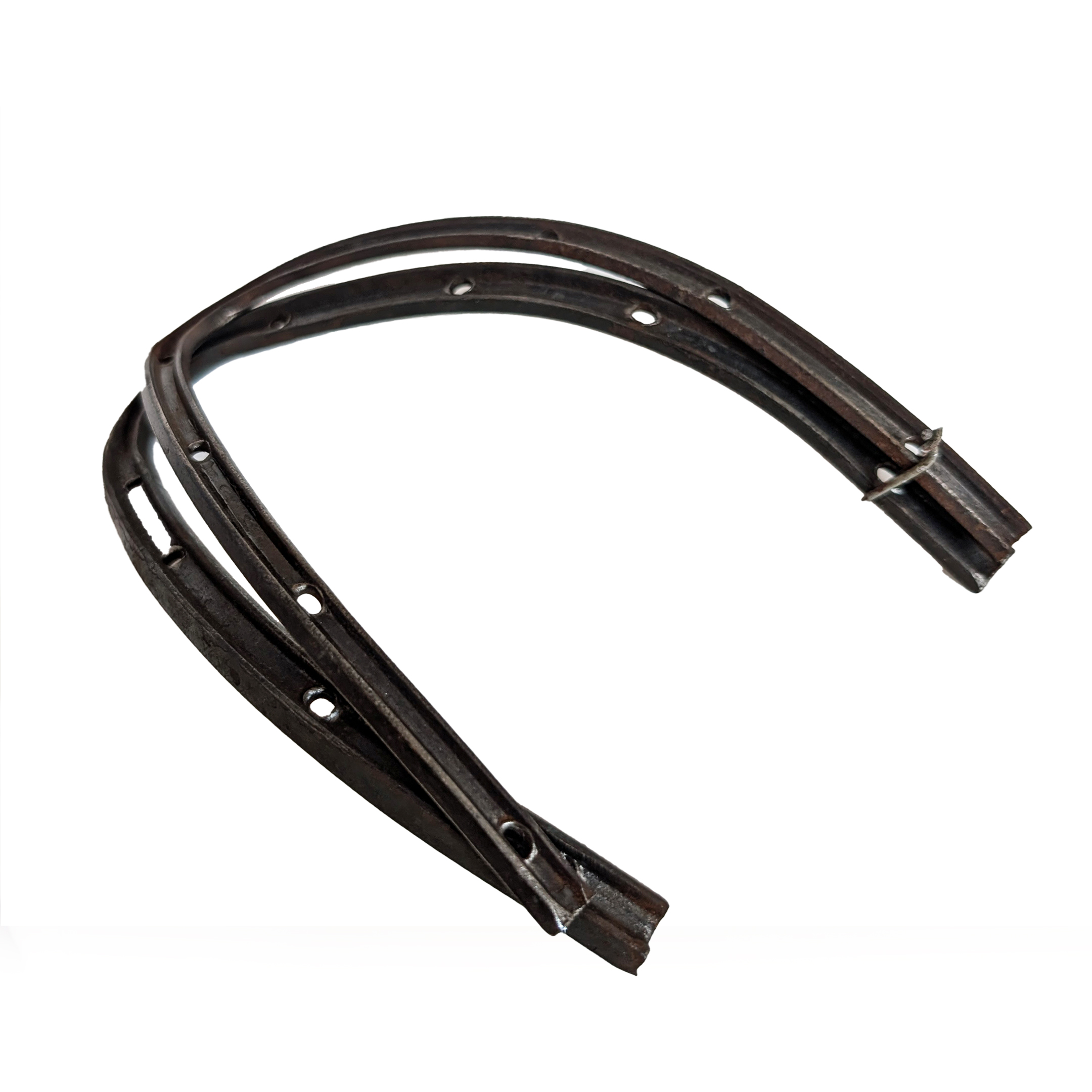Lancashire Clogs
Description
The clog is a sturdy form of footwear made with a wooden sole and a leather upper. The recognisable Lancashire clog became common during the Industrial Revolution on the feet of many workers including those in mills, mines, and factories. The wood commonly used in Lancashire was Alder, but other woods such as Beech, Sycamore, Ash, and even Willow could be used. The favoured leather was Kip, full grain Water Buffalo hide impregnated with tallow, oils and waxes which was very strong, but remained far more flexible than other shoe leathers.
It was a skilled task to make a pair of clogs and a well-made pair could last a reported 40 years. There was a clog maker in every community in a workshop with a bench and stock knives to shape the soles, leather knife and press to cut the uppers, and a last and brass tacks to form the clog and attach the irons (the metal runner attached to the sole to prevent wear to the wood).
Styles varied from a lighter sandal style upper with a thinner sole right up to a heavy boot with a steel top cap designed for working in mines or steel works. In Lancashire most clogs during the period 1840 to 1940 were used in the cotton mills. Men's clogs were fully laced whereas ladies' clogs were more likely to be clasped with a fancy brass or steel fastener.
Two other associations with the Lancashire clog are clog dancing and clog fighting. Clog dancing may or may not have originated in the mills, but it became a popular music hall entertainment, often accompanied by dialect verse or song. 'Purring' or clog fighting by shin kicking, was for a period a common means of settling disputes or scores in Lancashire mill towns.
On display
50 Objects Exhibition at Helmshore Mills Textile Museum 6 June - 31 October 2025. Search www.lancashire.gov.uk for Helmshore Mill opening times.



